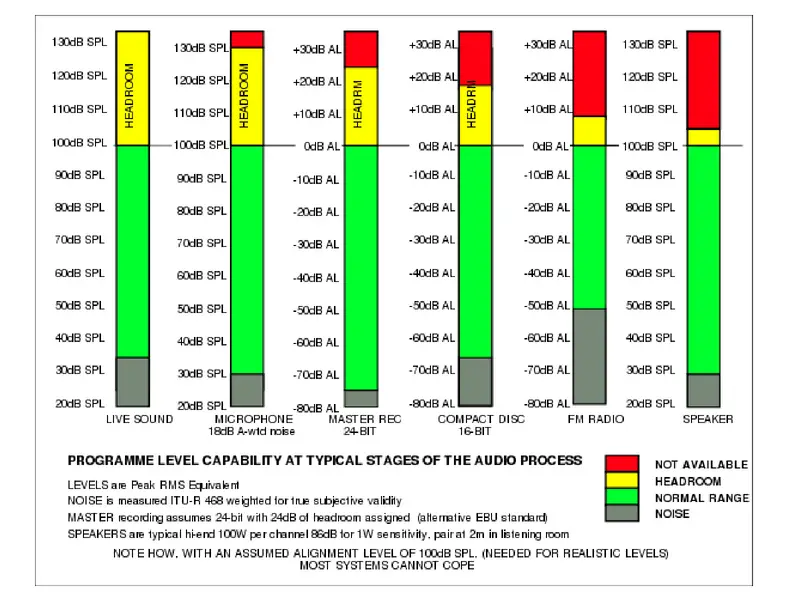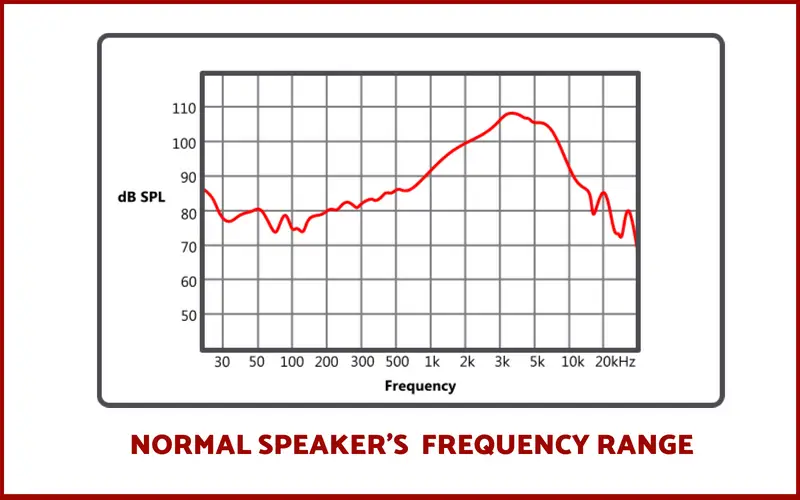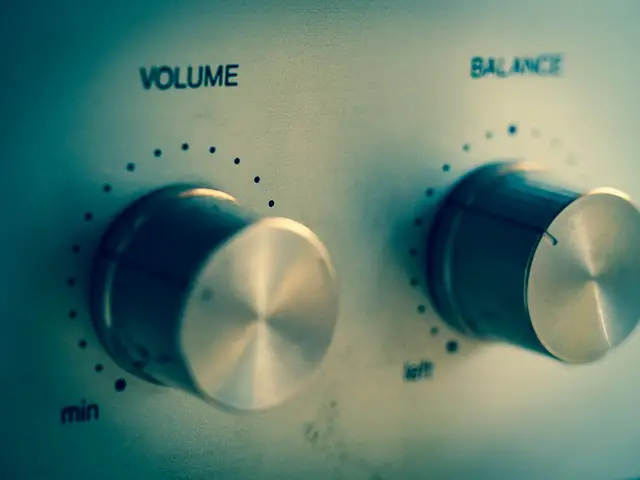In this article, I’ll compare Studio Monitors Vs Speaker. After reading this article you will easily understand what is the difference between monitors and speakers and why monitors are preferred for audio recording and mixing.
This is a common question every music enthusiast like to know that what is the difference between professional studio monitors and normal speakers?
I have written this article to clear all your doubt about this topic. But, first I would like to tell you how and why the idea of sharing this information came into my mind…
As a professional recordist, I am very curious about new audio equipment, mixing and mastering techniques. Usually, if I have doubt about something, search the internet for the right answer.
Few day ago, I was finding the comparison between studio monitors vs speakers. Unfortunately, I didn’t find any valuable information.
There were some forum discussions but they were not quite helpful. This incident encouraged me to research and write this article for my readers.
This article will give you the brief guide on the difference between studio monitors and normal speakers.
Normal speakers add color to the sound they deliver but studio monitors are designed to deliver sound without coloring the frequencies.
Disclosure: This post may contain affiliate links, which means we may receive a commission if you click a link and purchase something that we recommended. Read more about Affiliate disclosure here.
The frequency response graph of a studio monitor is normally flat in comparison to normal speakers.
The main motive of studio monitors is to provide neutral sound without any modification so that the recordist could get the same sound as it was recorded.
It helps the recordist to make changes in the audio. On the other hand, normal speakers deliver colorized sound so that listeners could get more attractive sound.
Table of Contents
Studio Monitors Vs Speakers (Brief Analysis)
Well, you have got the in short answer, its time to go into detail comparison of studio monitors vs speakers. Here is the 10 point analysis which helps you to differentiate between studio monitors and normal speakers.
The purpose of manufacturing
Normal speakers are designed for listeners. A listener wants a sound which could please him. Normal speaker manufacturers are aware of that and design their products as they could deliver a hi-fi sound.
They don’t focus on the accuracy of the sound but on the quality of the sound.
That’s the reason that when you listen to a final song in a normal speaker it sounds good as compared to the studio monitor. They are built as they could modify a song for the listeners.
On the other hand, a studio monitor is designed for recordists and mixing engineers.
The main purpose of studio monitors is to deliver unaltered sound so that the recording engineer could make changes in the soundtrack and get a better mix.
For a better mix, an unaltered sound is the most important factor.
Let us get an example. Suppose you have a track whose bass line is boosted and you have to reduce that to listener range.
Now, if you mix it in a normal speaker which delivers high-frequency sound boosted and cuts the low-frequency sounds. What will you get in result?
You cut-down the bass lines and get a mix without depth.
Here studio monitor comes into play. As they deliver nearly flat frequency throughout the frequency range, you can mix far better in them.
Price difference

Normal speakers are built for normal listeners so manufacturers build them as they could fit on the pocket of listeners.
There are costly normal speakers also in the market but generally, they are cheaper than studio monitors.
Keeping the price on a budget is a marketing strategy and is strongly applicable to consumer goods. Normal speakers fall into the consumer electronics category.
They face more competition then professional equipment. Keeping the price on consumer’s budget help the manufacturers to sell more.
The USP of Pro equipment including pro audio is a quality. They can’t compromise with quality to keep the price low.
The manufacturers of pro audio equipment concentrate more on quality rather than price. They use costly materials and services to build studio monitors hence the price becomes high as compared to normal speakers.
Sound Quality
If you ask me about the sound quality of both then I would tell you that normal speakers deliver better sound then studio monitors.
The reason is simple. they are built for normal listening. If they could not deliver a hi-fi sound why would anyone buy them?
The sound you listen via a normal speaker is not the original quality. The sound normal speakers deliver are colorized and boosted in some frequency range to make it listener friendly.
In studio monitors, recordists don’t want any colorization, boosts, and cut off in frequencies. They prefer to listen to the same sound they record.
So the sound they deliver is neutral and obviously don’t make you smile if you are a normal listener. Do you want a rock song without extra bass?
Or a country music without some extra mid? Studio monitors don’t do that. They keep the sound as neutral as possible.
You may also like,
Distortion
In normal speakers, especially with budget speakers, you get distortion after a certain volume range. The driver of normal speakers is not capable to deliver undistorted sound in high volume.
The amp is also a factor. Normal amp manufacturers generally use those components which are not capable to handle the power above a certain volume range and produce distortion.
On the other hand, the drivers and amps of studio monitors are well designed and capable to handle high volume operation.
In the active studio monitors, the amp is built according to the wattage and frequency range of the driver so they don’t be overloaded in high volume operation and keep the distortion away from the audio.
As a result, you get more accurate sound to mix.
Dynamic Range

Dynamic range matters a lot for a speaker. If the dynamic range of a speaker is not good then you get a crappy sound.
Dynamic range is the difference between the lowest and the highest intensity of the audio. Suppose you have a soundtrack and the highest intensity of the sound is -1 dB while the lowest is -30 dB.
If you listen to this soundtrack in a speaker which is only able to deliver the dynamic range of 20dB then you will miss the sounds below -21 dB.
In normal speakers, dynamic range is not so much good as compared to studio monitors.
In studio monitors, we have to listen to the lowest intensity sounds to get a better mix over the frequency range so they are designed as they could deliver more dynamic range than normal hi-fi speakers.
Frequency Response

Frequency response is another important factor. Studio monitors can deliver wider and flatter frequency response than the normal speakers.
Normal speakers are built to provide boosted frequency at some areas of the spectrum but studio monitors have a neutral frequency curve.
The frequency range is wider in studio monitors as compared to normal speakers.
Depending on the manufacturer and quality, studio monitors are able to deliver from 20Hz up to 50kHz.
Normal speakers generally deliver between human audible range – 20Hz – 20kHz. Moreover, the frequency curve is unbalanced to add color, boost, and cut-off to the sound.
Quality of Amp

Normal speaker amps are generally made of cheap components.
Normal speaker manufacturers have to face the consumer market competition so they have to build their amp with cheap components.
As a result, the quality of the amp has been compromised and you get a cheap quality(narrow frequency response, low dynamic range) sound as compared to the studio monitors.
As well as the life of the components is short as compared to the studio monitor amps.
In studio monitors, the amp is precisely built with the best quality components. These components are able to provide the highly efficient sound and performance.
You get wide and flattened frequency response than normal speakers. The dynamic range of those amps is far better than normal speaker amps.
The lifespan of the components is also very high.
Artificial sound Vs Natural sound
I have already discussed that above. Normal speakers are built to deliver artificial sounds. They are consumer electronics and made to please the user.
So the manufacturers design them as they could add some color to the sound and provide the more pleasant sound.
Mostly, normal speakers are boosted in midrange so that the listeners could listen the human vocal more clear.
There are wide uses of normal speakers from normal song listening to the PA system of public transports, hospitals, and many industries.
In those areas, the human voice should be clear. Hence the midrange is slightly boosted in normal speakers.
Studio monitors provide neutral sound as more as possible. They are pro equipment and need precision. To mix a soundtrack we need as more neutral sound so that we could enhance and equalize the sound.
Design

Normal speakers are designed for daily consumers. They generally look fancier then studio monitors. Manufacturers concentrate to attract more buyers so they give a more fancy look to the normal speakers.
Studio monitors have a very professional look. They are designed to provide durability above the look. Studio monitor manufacturers give them a professional look which looks more friendly in your recording studio.
Building Materials
Normal speakers are built with wood or plastic materials and mostly not magnetic shielded. They are not internally sound treated, and the components are also cheap.
Studio monitors are made of MDF wood and metal. They are internally sound treated with special materials as well as they are magnetically shielded.
The drivers are made of composite materials which are more durable than normal speakers.
Some Common Questions and their Answer (FAQ)
Here are some common questions which can arrive in your mind.
Can we use the normal speaker as Studio monitors?
No, we cannot use normal speakers as studio monitors. Normal speakers deliver artificial sound and its not suitable for recording studio purpose.
Can you use studio monitors for regular speakers?
Yes, we can use studio monitors as regular speakers but we will have to compromise with the sound as we won’t get a hi-fi colorized sound.
It might be a bit disappointing for a normal listener. I would recommend you to go with normal speakers if you are a normal listener.
Wrapping Up
I have researched a lot to provide you with this valuable information. So that you don’t be confused about the difference between studio monitors and normal speakers.
Now you are aware of all the differences in studio monitors vs speakers. If you have more information on the topic share that valuable information with my readers.
Comment below.
You may also like,


![Heritage Audio i73 PRO Series Audio Interfaces Review [2024]](https://www.recordingbase.com/wp-content/uploads/2024/01/Heritage-Audio-i73-pro-series.jpg)




Great comparison. Very helpful. Thank you.
Very well articulated. After reading the article I doubt whether there can be any further question to our mind.
If I might summarize even more, I feel you are saying studio monitors deliver accuracy, speakers deliver color. I now mix at home my MIDI sequences using my old Sony dynamic headphones (for digital). I’m very satisfied, but not when I play the results on my regular speakers. If I purchased studio speakers, say Yamaha HS7s, I feel I would be satisfied by the accuracy, and would like playing my songs in my apartment to friends and family on the same speakers. Since people very often listen to music for pleasure using headphones, aren’t they opting for accuracy over colorful sounds? Or do consumer headphones also emphasize a pleasing sound over accuracy? My Sony headphones are for studio mixing. What do most headphones deliver in terms of your subject?
All the consumer headphones are built for pleasant sound not for delivering the same frequency response recorded. Which adds some color to the original frequency spectrum. So, I always suggest choosing a professional studio monitor or headphones which deliver near accurate sound. If you mix in a device that already adds the color you may end up with an unbalanced project. Which plays well on the speaker you mix on but not on other consumer-grade speakers.